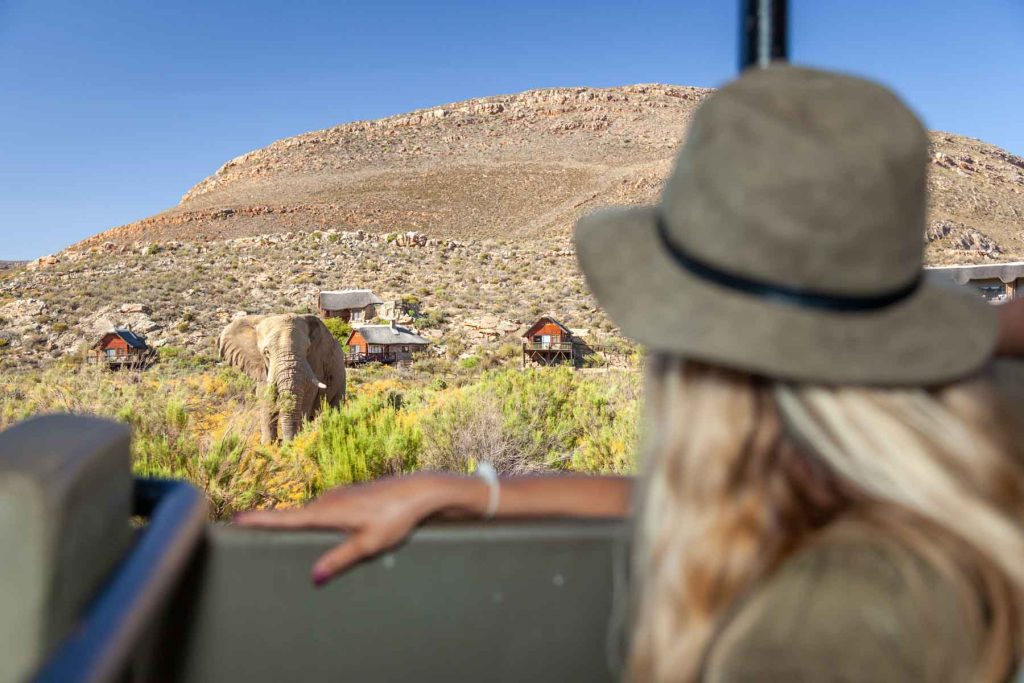The Big 5 refers to the African lion, leopard, rhino, elephant and buffalo. When you start researching an African safari, the term “Big 5” often comes up. This is because the big 5 animals are widely considered a “must-see” on any authentic safari adventure. These five impressive animals are renowned for their size, strength, and dangerous nature. However, because of their formidable reputation and early threat to human settlers, their once thriving populations have severely dwindled as a result of hunting, poaching, and a loss of habitat. To date, sighting these rare creatures is cherished and rare occasion—even on safari!
Here at Aquila, we believe in providing children with the unique opportunity to see and learn about South Africa’s incredible plants, majestic animals, and unique habitats. By exploring the reserve, children can develop a deep appreciation for nature while learning about the importance of wildlife conservation. From the curious giraffes to formidable hippos, we invite you to embark on our family-friendly Cape Town safari for the chance to see lions, elephants, zebras, ostriches, rhinos, and more.
Interesting Fact: Lions are the only social ‘Big cats’. They live in groups called prides, often consisting of one male, related females, and their offspring.
Size: Males weigh around 190 kg and measure up to 2.7 meters in length.
Where They’re Found: Although called the ‘king of the jungle’, lions don’t actually live in the jungle. They can be found in savannahs, grasslands, open plains, and semi-desserts across Africa.
Interesting Fact: Elephants have remarkable communication skills and use a wide range of sounds, body movements, and rumbles below human hearing (infrasound).
Size: African elephants are the largest land animals on earth, with males weighing around 5,000 kg and standing about 3-4 meters tall at the shoulder.
Where They’re Found: Elephants are found across Africa, in savannahs, forests, grasslands, and even the mountains.
Interesting Fact: Leopards are great climbers and like to carry their prey into trees out of reach of other predators.
Size: Leopards vary in size, with males weighing 36 to 91 kg, and measuring about 1.4 to 1.9 meters in length, excluding the tail.
Where They’re Found: Leopards are adaptable and inhabit a wide range of environments, including forests, grasslands, and mountains.
Interesting Fact: Buffalos are great at defending themselves. Buffalo herds form tight groups to fend off predators and can even fight off lion attacks.
Size: Buffaloes weigh between 450 to 900 kg and stand 1.7 to 2.0 meters tall at the shoulder.
Where They’re Found: These bovines travel in large herds and inhabit a variety of habitats in sub-Saharan Africa.
Interesting Fact: There are two species of African Rhinos: the ‘white rhino’ and ‘black rhino’.
Size: Black rhinos weigh 800 to 1,400 kg and stand 1.4 to 1.8 meters tall. White rhinos are larger, weighing 1,360 to 2,300 kg and stand 1.5 to 1.8 meters tall.
Where They’re Found: Black rhinos are scattered across southern and eastern Africa, while white rhinos are found mainly in southern Africa, particularly in grasslands and savannahs.
Aquila is proud to have re-introduced the big 5 into the western cape and is dedicated to the preservation of wildlife. Aquila’s conservation efforts extend to wildlife rehabilitation and re-introduction, land rehabilitation, anti-poaching programmes, eco-friendly tourism and community support
Approximately 250 years ago, the Big 5 were on the verge of extinction in the Western Cape. The effects of hunting, farming, and loss of natural habitats contributed greatly to the decline of many animal species in the wild. However, Searl Derman, the owner and founder of Aquila, set about searching for the perfect place to re-introduce the Big 5 to the Cape. He was fortunate enough to come across a nature reserve that would one day become the wildlife sanctuary and private reserve we now know as Aquila.
Dating back to colonial Africa at the turn of the 17th century, the concept of the “African Big Five” emerged alongside the surge in hunting with guns. The term “Big 5” initially referred to the challenge and level of difficulty hunting these animals. Five of Africa’s largest and most formidable mammal species: lions, elephants, buffaloes, rhinos, and leopards, were particularly renowned for their immense size, strength, and elusive nature. These intimidating wild animals presented a threat to farmers and emerging human settlements, making them a considerable feat for hunters seeking to showcase their bravery and skill.
Beyond their hunting difficulty, these iconic species hold historical and cultural significance across Africa. Revered as symbols of power and untamed wilderness, the Big Five are symbols of courage, honour, and nobility–a trend which can be observed around the world with the widely known phrase “King of the Jungle”. Native African communities, too, hold deep respect for the Big 5 animals, intertwining them with their spiritual, religious, and cultural beliefs. In Pedi culture the chief traditionally wears Leopard and Lion pelts to show leadership, and, in Kwa-Zulu Natal, Leopard skins are worn by Zulu royalty to show wisdom and strength.
As time progressed, conservation efforts gained momentum, recognising the urgent need to safeguard the Big 5 from the brink of extinction. The historical fame of the African Big Five has since evolved from a testament to hunting bravery into a widespread effort to preserve Africa’s natural wildlife heritage. Game reserves, rehabilitation projects, and conservation initiatives help ensure future generations can continue to see the Big 5 living wild and free in their natural habitat.


Copyright© Aquila Collection. Aquila Private Game Reserve and Spa is part of the Aquila Collection.